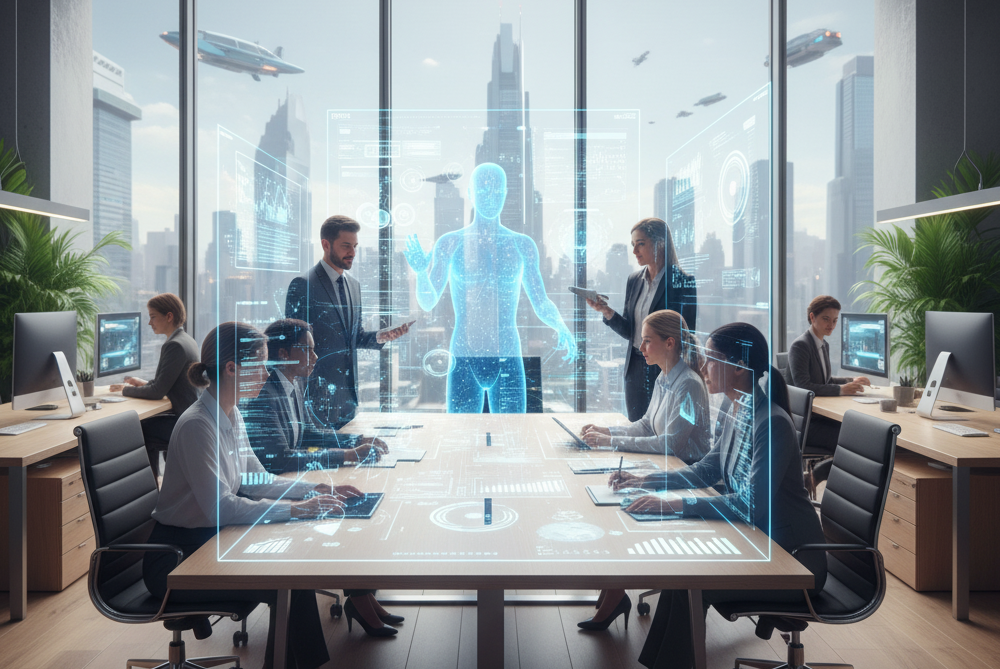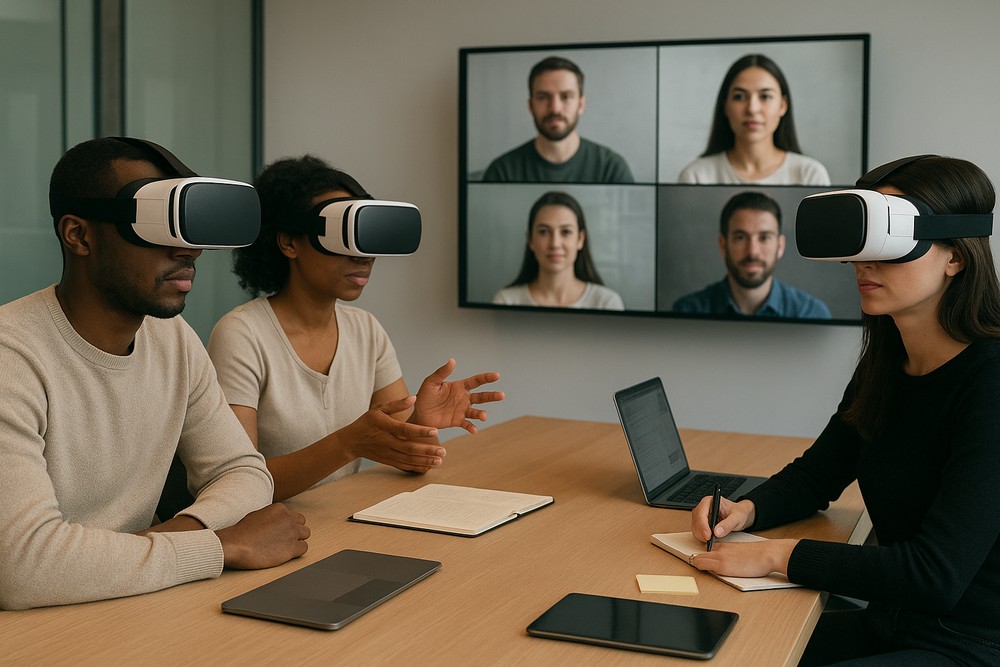The Future of Work: Tech Innovations Changing the Workplace in 2026
William Foster
2025-09-21
6 min read

The workplace of 2026 looks dramatically different from just a few years ago. As we navigate this new era, technological innovations have fundamentally reshaped how we work, where we work, and what work means. The convergence of artificial intelligence, advanced remote collaboration tools, and sophisticated automation has created a workplace ecosystem that prioritizes flexibility, efficiency, and human potential in ways previously unimaginable.
Artificial Intelligence as the Ultimate Work Partner
Artificial intelligence has evolved from a futuristic concept to an indispensable workplace companion. In 2026, AI systems serve as intelligent assistants that handle routine tasks, analyze complex data patterns, and provide real-time insights that enhance human decision-making. These systems have become sophisticated enough to understand context, predict needs, and adapt to individual work styles. Modern AI tools excel at automating administrative tasks that once consumed hours of human effort. They schedule meetings by analyzing participants' calendars and preferences, draft initial responses to routine emails, and compile comprehensive reports from multiple data sources. This automation frees employees to focus on creative problem-solving, strategic thinking, and relationship building—areas where human intelligence remains irreplaceable. The integration of AI in customer service has transformed how businesses interact with clients. Advanced chatbots and virtual assistants now handle complex queries with remarkable accuracy, while seamlessly escalating issues to human agents when necessary. This hybrid approach ensures customers receive immediate support while allowing human representatives to focus on more nuanced and emotionally complex situations. Machine learning algorithms have revolutionized project management and resource allocation. These systems analyze historical data, current workloads, and team capabilities to suggest optimal project timelines, identify potential bottlenecks before they occur, and recommend resource redistribution to maximize efficiency. Project managers now spend less time on administrative coordination and more time on strategic planning and team development.
The Evolution of Remote Work Technology
Remote work technology has matured far beyond basic video conferencing and file sharing. Today's remote work ecosystem creates immersive experiences that rival in-person collaboration while offering unprecedented flexibility. Virtual reality meeting spaces allow teams to gather in realistic digital environments, complete with spatial audio and gesture recognition that makes remote interactions feel natural and engaging. Advanced collaboration platforms now integrate multiple work functions into seamless digital workspaces. These platforms combine project management, communication, document editing, and workflow automation in intuitive interfaces that adapt to team preferences and working styles. Real-time collaboration has reached new levels of sophistication, with multiple users simultaneously editing documents, designs, and code while maintaining version control and tracking individual contributions. Cloud computing infrastructure has become more robust and accessible, enabling organizations of all sizes to access enterprise-level tools and computing power. This democratization of technology allows small teams to compete with larger organizations by leveraging the same advanced tools and capabilities. The shift to cloud-native applications has also improved security, reliability, and scalability for businesses operating in distributed work environments. Digital nomadism has been facilitated by improved global internet infrastructure and specialized tools designed for location-independent work. Secure VPN networks, international payment systems, and mobile-optimized productivity apps enable professionals to work effectively from virtually anywhere in the world while maintaining connection to their teams and projects.

Automation Reshaping Job Roles and Responsibilities
Workplace automation has evolved beyond simple task replacement to become a tool for human augmentation and capability enhancement. Rather than eliminating jobs wholesale, modern automation typically transforms roles by removing repetitive elements and elevating the human contribution to higher-value activities. This shift has created new categories of jobs focused on managing, optimizing, and collaborating with automated systems. Manufacturing environments showcase some of the most dramatic transformations. Collaborative robots, or cobots, work alongside human operators to combine the precision and consistency of machines with human creativity and problem-solving skills. These partnerships have improved both productivity and job satisfaction, as workers engage in more varied and intellectually stimulating tasks while maintaining physical safety through robotic assistance. Data analysis and reporting have been revolutionized by automated systems that can process vast amounts of information and generate initial insights. However, the human role has become more critical than ever in interpreting these insights, understanding their business implications, and making strategic decisions based on automated recommendations. This evolution has created demand for professionals who can bridge the gap between technical analysis and business strategy. Quality control and compliance monitoring have benefited significantly from automated systems that can detect patterns, anomalies, and potential issues with greater consistency than human oversight alone. These systems work continuously to maintain standards while alerting human supervisors to situations requiring judgment, creativity, or complex decision-making.
The Human Element in a Tech-Driven Workplace
Despite extensive technological integration, the human element remains central to workplace success in 2026. Technology has actually amplified the importance of uniquely human skills like emotional intelligence, creative thinking, and complex problem-solving. As routine tasks become automated, organizations increasingly value employees who can navigate ambiguity, build relationships, and drive innovation. Leadership roles have evolved to focus more heavily on coaching, mentoring, and creating environments where both human workers and technological systems can thrive. Modern managers spend less time on administrative oversight and more time on strategic planning, team development, and fostering organizational culture. This shift has led to more engaging and fulfilling leadership experiences while improving outcomes for teams and organizations. The integration of technology has also highlighted the importance of continuous learning and adaptation. Successful professionals in 2026 embrace lifelong learning, regularly updating their skills to work effectively with new tools and systems. Organizations support this growth through personalized learning platforms, mentorship programs, and flexible career development pathways that accommodate rapid technological change.
Looking Forward: Sustainable Innovation
As we move through 2026 and beyond, the focus on workplace technology is shifting toward sustainability and long-term value creation. Organizations are increasingly prioritizing tools and systems that not only improve immediate efficiency but also contribute to employee well-being, environmental responsibility, and social impact. This holistic approach to workplace innovation ensures that technological advancement serves broader goals beyond mere productivity gains. The workplace of 2026 demonstrates that successful technology integration enhances rather than replaces human potential. By automating routine tasks, facilitating flexible work arrangements, and providing powerful analytical tools, technology has created space for workers to engage in more meaningful, creative, and impactful activities. This evolution continues to accelerate, promising even more exciting developments in how we work, collaborate, and create value in the years ahead.



